Jörg Hüttner:
Merging Synthesizers and Cinematic Soundtracks
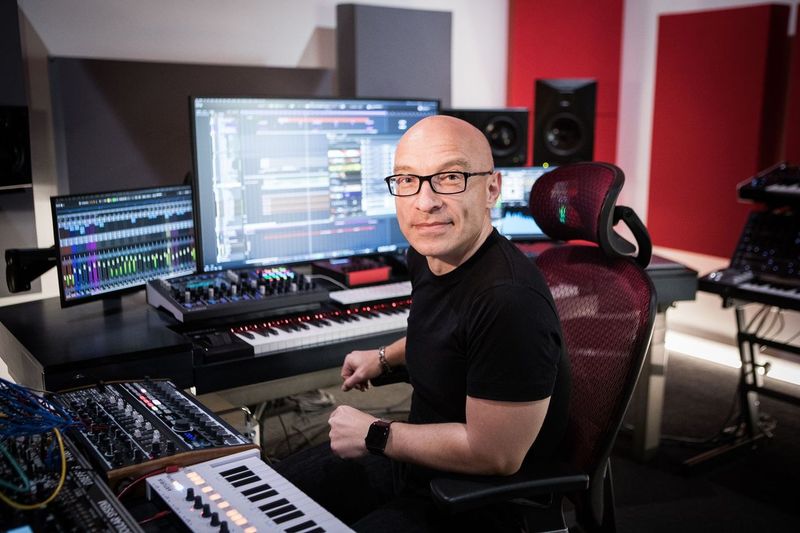
Photo by Mel Castro (@melhummel)
Jörg Hüttner is a German film composer, synth programmer and sound designer whose work bridges the worlds of electronic music and cinematic scoring. Born in Ulm, Germany, Jörg’s journey into music began at an early age. From piano lessons, he quickly found his way when the electronic sound from artists like Depeche Mode or Jean-Michel Jarre, among others, captured his attention. By the age of 15, he was already creating sounds on his first synthesizer, on the way to a lifelong passion.
In March of 2007, encouraged by Hans Zimmer, Jörg moved to Santa Monica, California, to pursue his career in film music. Since then, he has remained extremely active in the film music world. He has worked on over 30 films, written numerous cues for TV and trailers, and even received a nomination for a News & Documentary Emmy in 2018. As some examples, Jörg contributed the electronic landscape of films like “Girl on a Train”, “Fifty Shades of Grey”, “Independence Day: Resurgence”, “How It Ends”, “Army Of Thieves” as well as the HBO Documentary “Cries from Syria”.
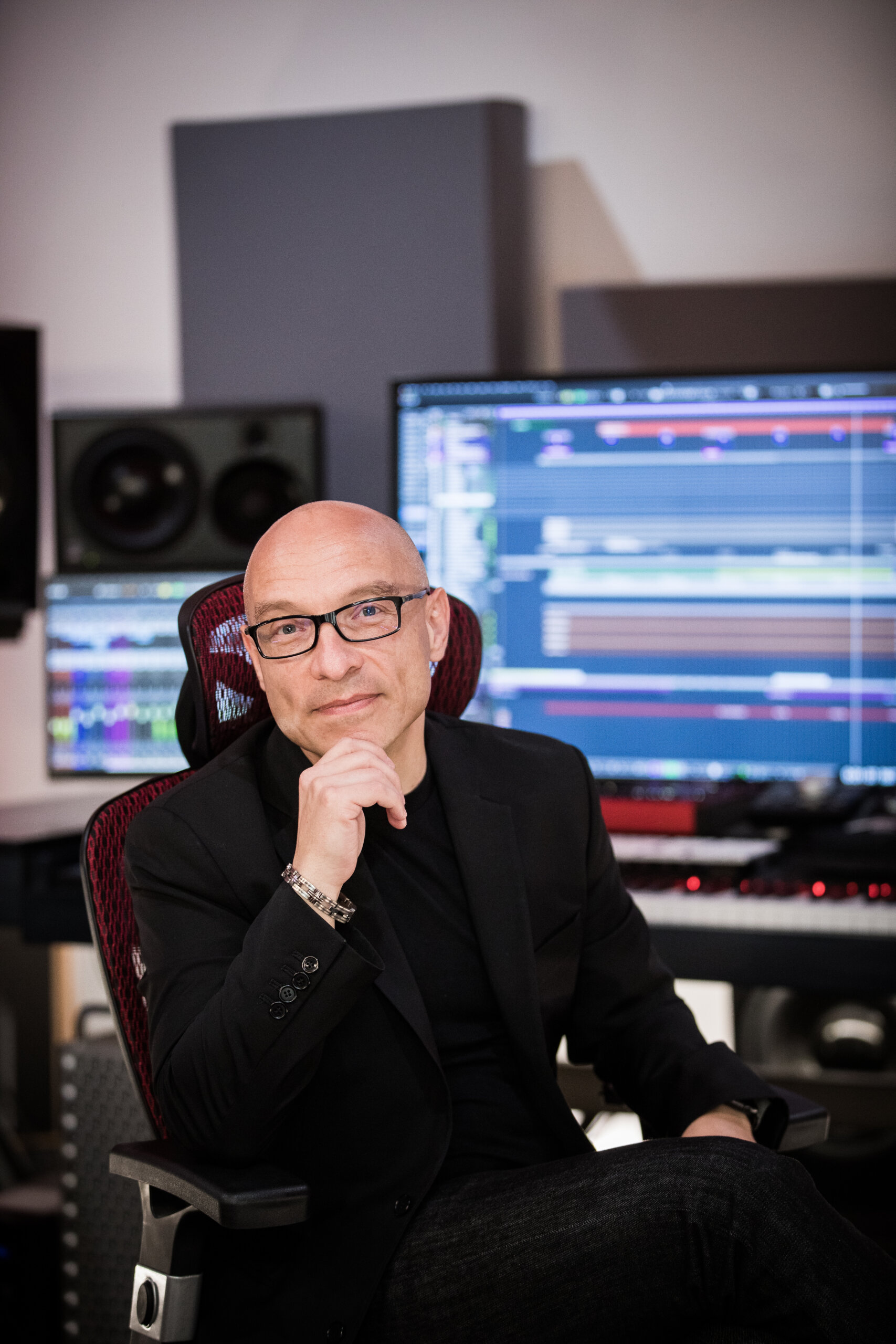
Photo by Mel Castro (@melhummel)
Over the years, he has not only worked in Hollywood film music, but also designed factory presets for synthesizer manufacturers. Jörg’s connection to Waldorf Music runs deep. As an unabashed synth enthusiast, he’s been using Waldorf gear for decades and even cites the legendary Waldorf Wave as his all-time favourite synth. As a sound designer, Jörg has contributed 30 factory presets for the Quantum Waldorf synthesizer, showcasing the instruments’ vast sonic possibilities. This sounds can also be found in Waldorf’s’ “Iridium” Desktop and Keyboard Synthesizers, which feature the same sound engines. His love for wavetable synthesis and innovative sound creation makes him a perfect fit for the Waldorf family.
Since 2015 Jörg is a member of The American Society of Composers, Authors and Publishers (ASCAP) and since 2016 also of the “Society of Composers and Lyricists” (SCL). Important to note, on October 11th, 2019, Hüttner released his debut artist project, War of Roses.
Jörg Hüttner is an artist with an interest with no musical borders, who continues to push the boundaries of what synthesizers, and music, can do. When he’s not working on film scores or working on his own musical projects, he is experimenting in his studio with everything from dark industrial tones to rich ambient grooves, and different genres as electronica, pop, rock or metal.
Waldorf Music had the pleasure of interviewing him and learning more about his creative process.
How would you
introduce yourself
as an artist?
How would you
introduce yourself
as an artist?
I’m a composer, music producer and synthesizer programmer based in Santa Monica, California. I write music and design sounds for film, TV, and all other media, including corporate clients like car manufacturers. And I design sounds for hardware and software instruments.
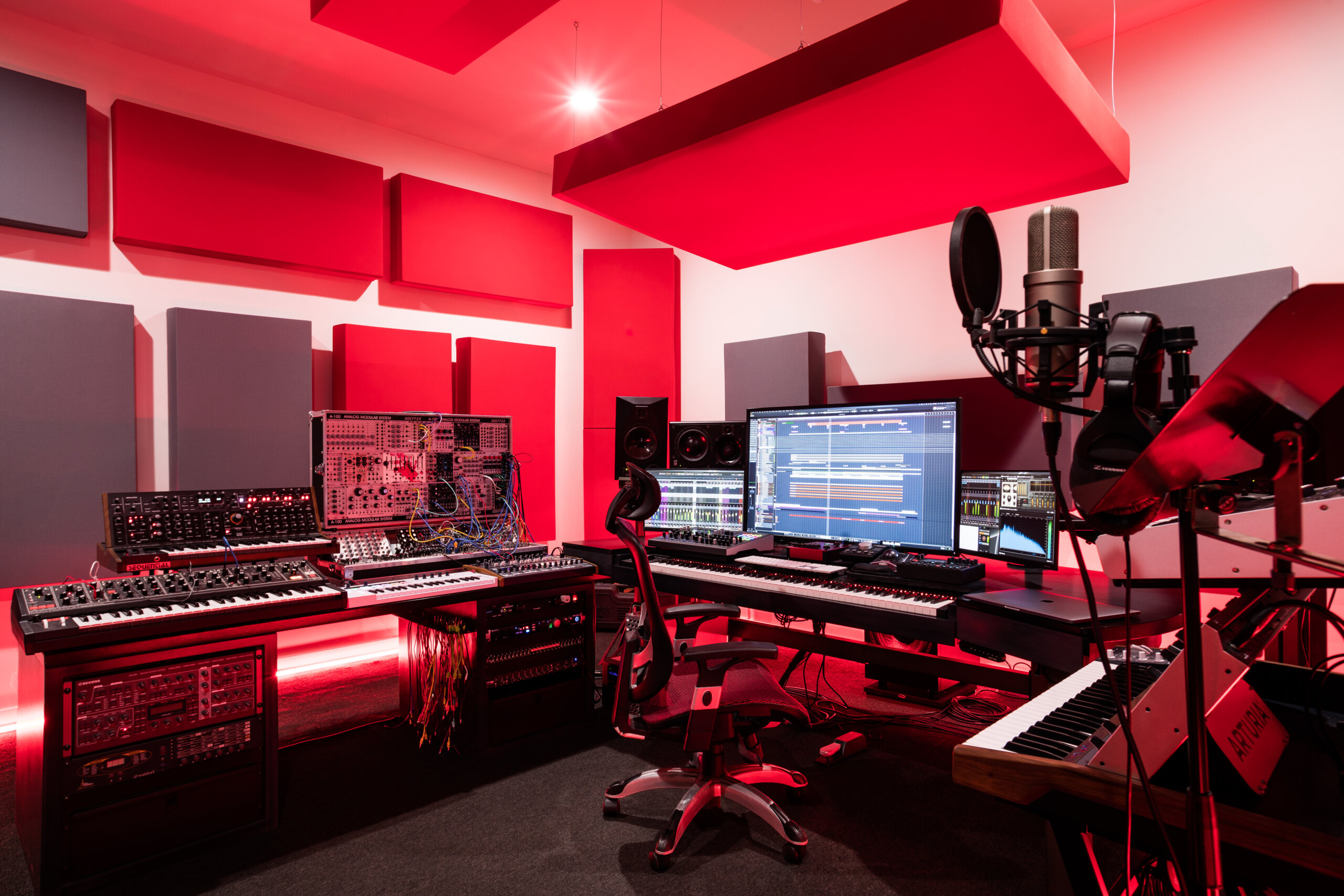
Photo by Mel Castro (@melhummel)
How did you start
making music?
How did you start
making music?
I bought my first synthesizer at age 15, and the first steps weren’t too elaborate, since it took me a while to understand the synth, and it didn’t have a sequence. So, I couldn’t really save my ideas until I bought a hardware sequencer a year or so later. From that point on, I was at least able to store ideas in Midi form. This was before computers were a wide-spread thing for sequencing, let alone recording.
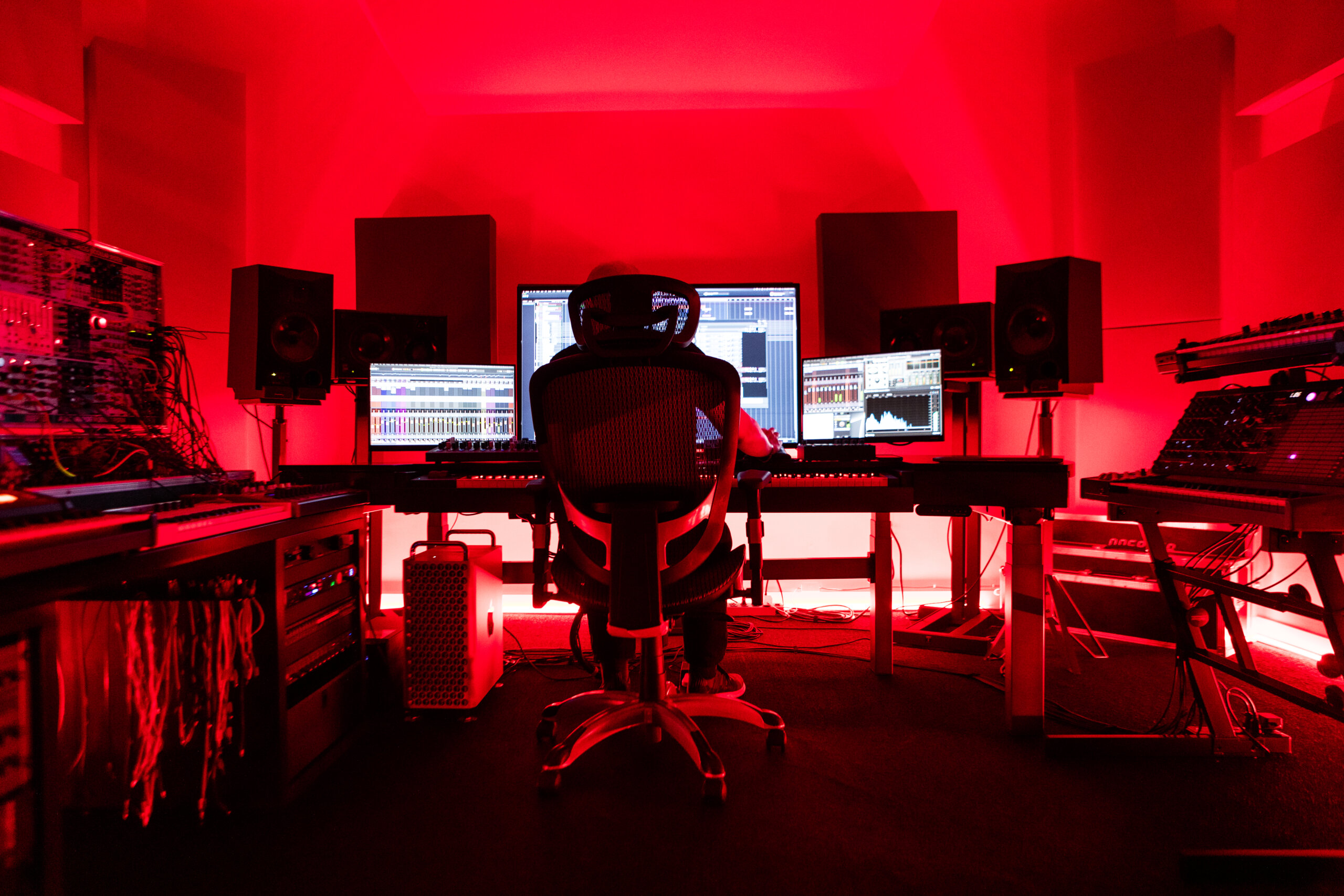
Photo by Mel Castro (@melhummel)
What was your
first synth?
first synth?
It was a Roland D-10. The tiny brother of the D-50. This was all I could afford at the time. It was capable of producing a wide range of sounds, including some sample-based stuff, but not really at a great sounding quality for today’s standards. The user interface was also a nightmare compared to what today’s synths offer. I purchased the Roland MV-30 hardware sequencer as my next device to be able to record ideas.
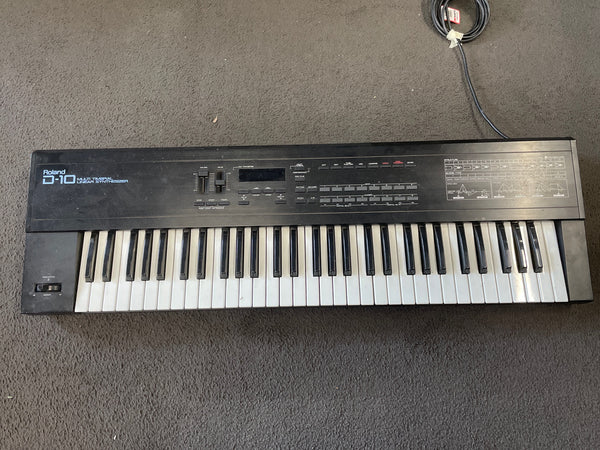
What are the key
hardware or software
you use in the studio?
The center in my studio is a new, decked-out Mac Pro. Even with a lot of hardware around, most stuff is simply happening “in the box” now, and I love the performance, silence and stability of computer systems in today’s age.
Hardware-wise, my “Iridium” is right next to me on the desk, so it is used regularly. Other hardware synths I use are a Sequential “Pro3 SE”, Moog “Subsequent37”, ASM “HydraSynth”, Elektron “Syntakt”, Arturia “MatrixBrute”, and my custom-configured Eurorack modular system.
I compose in Steinberg’s latest “Cubase Pro” DAW, and my go-to instrument plugins include u-he “Zebra2” and “Diva”, NI “Kontakt 8”, Modartt “Pianoteq 8”, Arturia’s “Pigments” and various their synth, effects and distortion plugins. Other effect, mixing, and processing plugins are from PSP Audioware, Valhalla DSP, FabFilter, SoundToys, Oeksound, among others.
Also, I love my ATC SMC25A Pro speakers. A set of good-sounding speakers is not to be underestimated.
What is the first thing
you do when
approaching a new synth?
What is the first thing
you do when
approaching a new synth?
I try to get to a basic unit patch, and go from there. This generally helps me to figure out what I can do with the oscillators, filters, etc. and how the unit really sounds without any influence from a pre-designed patch. Should the interface not be intuitive enough, I might take a brief look at a manual or a video, but in most cases, this isn’t needed. Next, I might try to use it in something I am working on, to get deeper into it, and to learn about its features, etc.
Using presets or
patching your
own sounds?
Using presets or
patching your
own sounds?
In 99% of the time, I design my own patches. In fact, I’m often quicker starting from scratch, than endlessly scrolling through patches, which costs more time than people might think.
What do you
appreciate most
in a synthesizer?
appreciate most
in a synthesizer?
Sound quality, build quality and intuitive ways to get around its features, menus, etc.
A good synth should allow you to get around it for the majority of things without having to look up a manual. And innovation is important! While I appreciate good recreations of classics, I’m more interested in manufacturers trying new approaches, new sound engines and other fresh features.
What role do
Waldorf synths
play in your music?
Waldorf synths
play in your music?
Waldorf synths play a big role in my music and are partly responsible for why I moved to the USA. I became a big fan of Waldorf synths in the early 90s and bought the “Pulse” in ’95, I think. It’s still in my rack today. I started to design sounds for Waldorf in ’98, and sounds for the “Q” and “Microwave XT” piqued the interest of some LA composers, which led to personal contacts and later on to first projects. It didn’t hurt that I was also doing product support for Waldorf for a few years and worked on their booth at music trade shows.

What inspires
your music?
My interest in electronic music started already at age 9, when I purchased my first Depeche Mode record. I consider them my inspiration to get into music and make it my profession. Other artists that inspired me early on were Jean-Michel Jarre and some 80s bands like Ultravox, Frankie Goes To Hollywood, Propaganda, etc.
I had piano lessons from age 7 or 8 on, but I wasn’t really a fan of the classical stuff I had to learn. I got more fond of classical music later. In the early 90s, numerous industrial bands made it into my record collection, like Skinny Puppy, Nine Inch Nails, or other interesting bands like The Prodigy and Massive Attack. End of the 90s, my interest in film scores grew, and you will still hear influences from all this music on current compositions, if it isn’t really something in an entirely different genre.
At what time will
we meet you most
often in your studio?
we meet you most
often in your studio?
I always was, and I still am, a night owl. I start my day with administrative things and working out, so I often won’t arrive at the studio until 2-3pm. If I’m not on deadlines or anything, I leave here generally around 10-11pm.
What’s your typical
workflow when starting
a new project?
workflow when starting
a new project?
That is a tough one. It always depends on the project, and what is needed for it. If I need to do synth programming or design sounds for a composer or project, I will listen to initial ideas and get an idea from the composer in a call about what is needed or wanted. If it is a corporate project, it will be highly influenced by brand ID, possible marketing material and research, or general outlines from the customer. When composing for a film or project, it will be influenced by the story, script, or temp music. It is never the same, which makes this also so interesting.
Do you have a preferred
instrument or technique
to begin sketching ideas?
Do you have a preferred
instrument or technique
to begin sketching ideas?
Not really, since it can be a sample, that I put into a granular engine. Or a melody popped into my head, and I try to record it quickly with a piano (even on my iPhone), or I record a quick voice memo. Sometimes I just play around with a synth, which sparks an idea. The more influence comes from outlines for a project, the easier it normally is to find a start.
How do you manage
the balance between
third-party productions
for others and your
personal projects?
How do you manage
the balance between
third-party productions
for others and your
personal projects?
In short, terribly. I should focus way more on my own music, since I get many compliments for it, but bills have to be paid, and there’s hardly ever something I turn down. Some projects bring an interesting challenge I don’t want to miss. That being said, I hope I can focus again more on my own projects soon.
How do you adapt
your sound to fit
different narratives?
How do you adapt
your sound to fit
different narratives?
Getting directions from my clients will be a first step. This sometimes sets the tools I will be using for the project. The harder and more industrial-influenced projects are, the more my modular comes into focus, for instance. Sometimes I get sent recordings to be used in the sound design, which gives already a clear direction. If I need to be able to share the project, it most likely will end up completely “in the box.”
Similarly, when
designing sounds,
how do you balance
creativity with
technical
requirements?
Similarly, when
designing sounds,
how do you balance
creativity with
technical
requirements?
The first couple of sounds are often the most fun, since you can explore the new device or software, and see where it takes you. In some cases, there might be requests for certain types of sounds, like basses, pads, leads, etc., in specific numbers, which can be limiting if you have mostly ideas for one specific type. Having done large sound sets in the past, the higher the number of sounds to be designed, the more it becomes difficult if at some point you simply run out of ideas. However, that also depends on the versatility of an instrument.
On what projects
are you currently
working?
I just finished a project with a colleague of mine from Munich. This was a corporate project for a car entertainment system, which will be shown at the CES in early 2025. I cannot talk too much about it until this is officially shown, but it was for Harman Kardon.
Another project I’m currently finishing is a modern take on Big Beat with the German-Greek singer SOFI (known, e.g., from Deadmau5 “SOFI needs a ladder”) for a production library / trailer music company for sync placements.
Follow Jörg Hüttner:
Jörg Hüttner:
Merging Synthesizers and Cinematic Soundtracks

Photo by Mel Castro (@melhummel)
Jörg Hüttner is a German film composer, synth programmer and sound designer whose work bridges the worlds of electronic music and cinematic scoring. Born in Ulm, Germany, Jörg’s journey into music began at an early age. From piano lessons, he quickly found his way when the electronic sound from artists like Depeche Mode or Jean-Michel Jarre, among others, captured his attention. By the age of 15, he was already creating sounds on his first synthesizer, on the way to a lifelong passion.
In March of 2007, encouraged by Hans Zimmer, Jörg moved to Santa Monica, California, to pursue his career in film music. Since then, he has remained extremely active in the film music world. He has worked on over 30 films, written numerous cues for TV and trailers, and even received a nomination for a News & Documentary Emmy in 2018. As some examples, Jörg contributed the electronic landscape of films like “Girl on a Train”, “Fifty Shades of Grey”, “Independence Day: Resurgence”, “How It Ends”, “Army Of Thieves” as well as the HBO Documentary “Cries from Syria”.
Over the years, he has not only worked in Hollywood film music, but also designed factory presets for synthesizer manufacturers. Jörg’s connection to Waldorf Music runs deep. As an unabashed synth enthusiast, he’s been using Waldorf gear for decades and even cites the legendary Waldorf Wave as his all-time favourite synth. As a sound designer, Jörg has contributed 30 factory presets for the Quantum Waldorf synthesizer, showcasing the instruments’ vast sonic possibilities. This sounds can also be found in Waldorf’s’ “Iridium” Desktop and Keyboard Synthesizers, which feature the same sound engines. His love for wavetable synthesis and innovative sound creation makes him a perfect fit for the Waldorf family.
Since 2015 Jörg is a member of The American Society of Composers, Authors and Publishers (ASCAP) and since 2016 also of the “Society of Composers and Lyricists” (SCL). Important to note, on October 11th, 2019, Hüttner released his debut artist project, War of Roses.
Jörg Hüttner is an artist with an interest with no musical borders, who continues to push the boundaries of what synthesizers, and music, can do. When he’s not working on film scores or working on his own musical projects, he is experimenting in his studio with everything from dark industrial tones to rich ambient grooves, and different genres as electronica, pop, rock or metal.
Waldorf Music had the pleasure of interviewing him and learning more about his creative process.

Photo by Mel Castro (@melhummel)

Photo by Mel Castro (@melhummel)
How would you introduce yourself as an artist?
How would you introduce yourself as an artist?
I’m a composer, music producer and synthesizer programmer based in Santa Monica, California. I write music and design sounds for film, TV, and all other media, including corporate clients like car manufacturers. And I design sounds for hardware and software instruments.
How did you start making music?
How did you start making music?
I bought my first synthesizer at age 15, and the first steps weren’t too elaborate, since it took me a while to understand the synth, and it didn’t have a sequence. So, I couldn’t really save my ideas until I bought a hardware sequencer a year or so later. From that point on, I was at least able to store ideas in Midi form. This was before computers were a wide-spread thing for sequencing, let alone recording.

Photo by Mel Castro (@melhummel)

What was your first synth?
It was a Roland D-10. The tiny brother of the D-50. This was all I could afford at the time. It was capable of producing a wide range of sounds, including some sample-based stuff, but not really at a great sounding quality for today’s standards. The user interface was also a nightmare compared to what today’s synths offer. I purchased the Roland MV-30 hardware sequencer as my next device to be able to record ideas.
What are the key hardware and/or software you use in your studio at the moment? What are your “must-have” tools in your studio? What is your favorite piece of gear in your studio (other than a synth) that you can’t do without?
What are the key hardware and/or software you use in your studio at the moment? What are your “must-have” tools in your studio? What is your favorite piece of gear in your studio (other than a synth) that you can’t do without?
The center in my studio is a new, decked-out Mac Pro. Even with a lot of hardware around, most stuff is simply happening “in the box” now, and I love the performance, silence and stability of computer systems in today’s age.
Hardware-wise, my “Iridium” is right next to me on the desk, so it is used regularly. Other hardware synths I use are a Sequential “Pro3 SE”, Moog “Subsequent37”, ASM “HydraSynth”, Elektron “Syntakt”, Arturia “MatrixBrute”, and my custom-configured Eurorack modular system.
I compose in Steinberg’s latest “Cubase Pro” DAW, and my go-to instrument plugins include u-he “Zebra2” and “Diva”, NI “Kontakt 8”, Modartt “Pianoteq 8”, Arturia’s “Pigments” and various their synth, effects and distortion plugins. Other effect, mixing, and processing plugins are from PSP Audioware, Valhalla DSP, FabFilter, SoundToys, Oeksound, among others.
Also, I love my ATC SMC25A Pro speakers. A set of good-sounding speakers is not to be underestimated.
What is the first thing you do when approaching a new synth?
I try to get to a basic unit patch, and go from there. This generally helps me to figure out what I can do with the oscillators, filters, etc. and how the unit really sounds without any influence from a pre-designed patch. Should the interface not be intuitive enough, I might take a brief look at a manual or a video, but in most cases, this isn’t needed. Next, I might try to use it in something I am working on, to get deeper into it, and to learn about its features, etc.
Using presets or patching your own sounds?
Using presets or patching your own sounds?
In 99% of the time, I design my own patches. In fact, I’m often quicker starting from scratch, than endlessly scrolling through patches, which costs more time than people might think.
What do you appreciate most in a synthesizer?
Sound quality, build quality and intuitive ways to get around its features, menus, etc.
A good synth should allow you to get around it for the majority of things without having to look up a manual. And innovation is important! While I appreciate good recreations of classics, I’m more interested in manufacturers trying new approaches, new sound engines and other fresh features.
What role do Waldorf synths play in your music?
Waldorf synths play a big role in my music and are partly responsible for why I moved to the USA. I became a big fan of Waldorf synths in the early 90s and bought the “Pulse” in ’95, I think. It’s still in my rack today. I started to design sounds for Waldorf in ’98, and sounds for the “Q” and “Microwave XT” piqued the interest of some LA composers, which led to personal contacts and later on to first projects. It didn’t hurt that I was also doing product support for Waldorf for a few years and worked on their booth at music trade shows.

What inspires your music? Are there specific composers, musicians, genres, cultural traditions, or musical styles that often inspire your work? How has this influence evolved over time?
My interest in electronic music started already at age 9, when I purchased my first Depeche Mode record. I consider them my inspiration to get into music and make it my profession. Other artists that inspired me early on were Jean-Michel Jarre and some 80s bands like Ultravox, Frankie Goes To Hollywood, Propaganda, etc.
I had piano lessons from age 7 or 8 on, but I wasn’t really a fan of the classical stuff I had to learn. I got more fond of classical music later. In the early 90s, numerous industrial bands made it into my record collection, like Skinny Puppy, Nine Inch Nails, or other interesting bands like The Prodigy and Massive Attack. End of the 90s, my interest in film scores grew, and you will still hear influences from all this music on current compositions, if it isn’t really something in an entirely different genre.
At what time will we meet you most often in your studio?
I always was, and I still am, a night owl. I start my day with administrative things and working out, so I often won’t arrive at the studio until 2-3pm. If I’m not on deadlines or anything, I leave here generally around 10-11pm.
What’s your typical workflow when starting a new project?
That is a tough one. It always depends on the project, and what is needed for it. If I need to do synth programming or design sounds for a composer or project, I will listen to initial ideas and get an idea from the composer in a call about what is needed or wanted. If it is a corporate project, it will be highly influenced by brand ID, possible marketing material and research, or general outlines from the customer. When composing for a film or project, it will be influenced by the story, script, or temp music. It is never the same, which makes this also so interesting.
Do you have a preferred instrument or technique to begin sketching ideas?
Do you have a preferred instrument or technique to begin sketching ideas?
Not really, since it can be a sample, that I put into a granular engine. Or a melody popped into my head, and I try to record it quickly with a piano (even on my iPhone), or I record a quick voice memo. Sometimes I just play around with a synth, which sparks an idea. The more influence comes from outlines for a project, the easier it normally is to find a start.
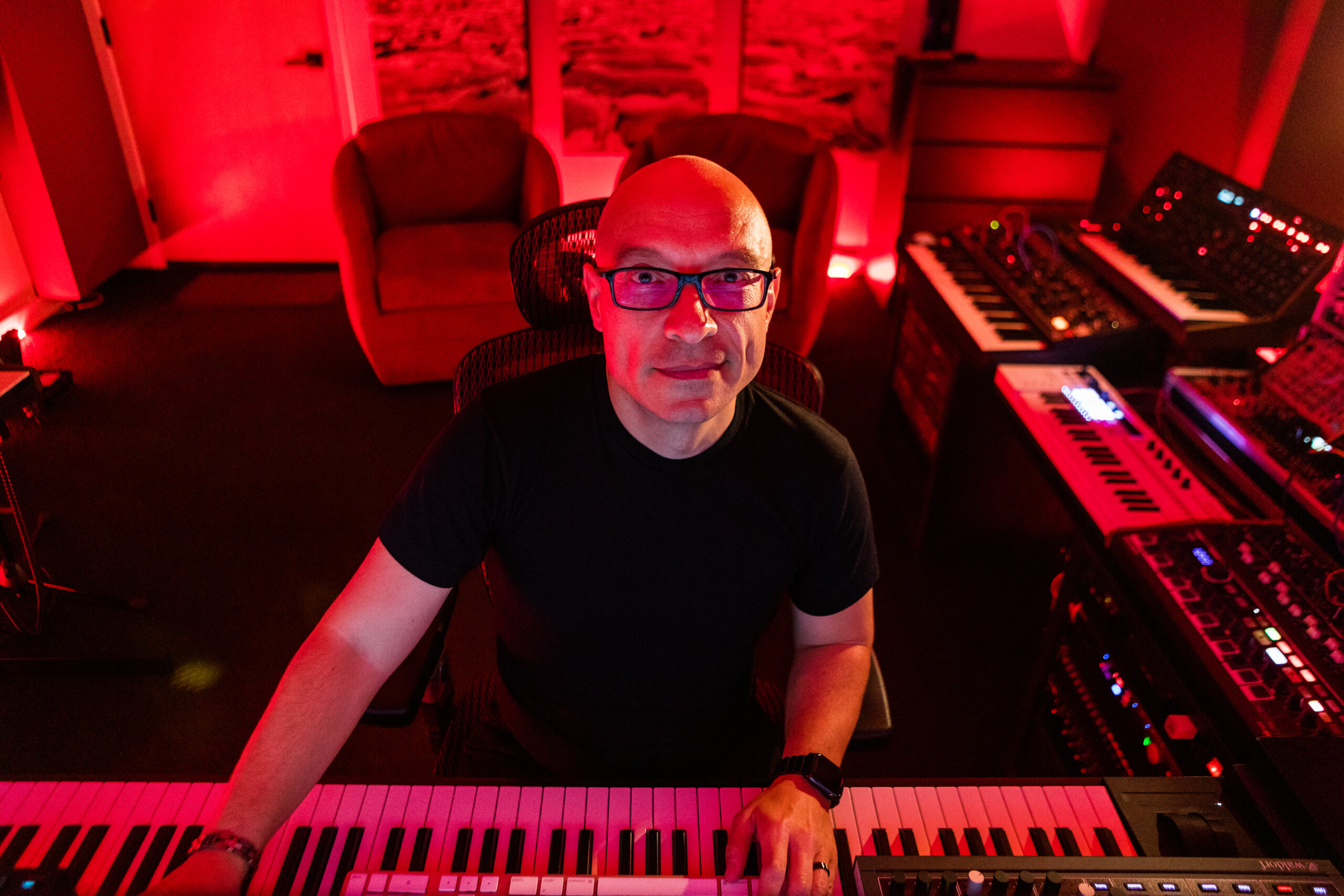
Photo by Mel Castro (@melhummel)
How do you manage the balance between third-party productions for others and your personal projects?
How do you manage the balance between third-party productions for others and your personal projects?
In short, terribly. I should focus way more on my own music, since I get many compliments for it, but bills have to be paid, and there’s hardly ever something I turn down. Some projects bring an interesting challenge I don’t want to miss. That being said, I hope I can focus again more on my own projects soon.
As a composer, sound designer or synth programmer, you’ve worked on numerous films and projects with diverse styles. How do you adapt your sound to fit different narratives?
As a composer, sound designer or synth programmer, you’ve worked on numerous films and projects with diverse styles. How do you adapt your sound to fit different narratives?
Getting directions from my clients will be a first step. This sometimes sets the tools I will be using for the project. The harder and more industrial-influenced projects are, the more my modular comes into focus, for instance. Sometimes I get sent recordings to be used in the sound design, which gives already a clear direction. If I need to be able to share the project, it most likely will end up completely “in the box.”
Similarly, when designing sounds for synthesizer manufacturers, how do you balance creativity with technical requirements?
The first couple of sounds are often the most fun, since you can explore the new device or software, and see where it takes you. In some cases, there might be requests for certain types of sounds, like basses, pads, leads, etc., in specific numbers, which can be limiting if you have mostly ideas for one specific type. Having done large sound sets in the past, the higher the number of sounds to be designed, the more it becomes difficult if at some point you simply run out of ideas. However, that also depends on the versatility of an instrument.
On what projects are you currently working?
I just finished a project with a colleague of mine from Munich. This was a corporate project for a car entertainment system, which will be shown at the CES in early 2025. I cannot talk too much about it until this is officially shown, but it was for Harman Kardon.
Another project I’m currently finishing is a modern take on Big Beat with the German-Greek singer SOFI (known, e.g., from Deadmau5 “SOFI needs a ladder”) for a production library / trailer music company for sync placements.

